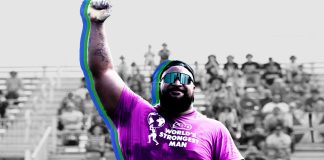
Many fitness enthusiasts have been asking questions about Jo Lindner’s rare condition called rippling muscle disease.
The passing of German bodybuilding Jo Lindner hit the fitness world hard. Many were shocked following the news and shared their condolences and tributes to Lindner on social media. His cause of death was revealed to be an aneurysm but many questions have been raised about his rare condition called rippling muscle disease.
After the news broke about his death, Lindner’s girlfriend shared on social media that it was due to an aneurysm. It has not been shared what exactly caused the aneurysm but RMD is not the suspected cause.
Since then, many fitness enthusiasts and experts have weighed in on this topic. According to Julia Louisa Iafrate, a Sports Medicine Physical at NYU Langon Health, the disease is not fatal but there is no known cause.

What Is Rippling Muscle Disease?
During a recent conversation, according to Men’s Health, Iafrate discussed what the disease was and why it is called rippling muscle disease.
“Muscle stiffness after exercise or in cold temperatures, inability to walk on the heels, tiptoe walking with pain, calf hypertrophy, and percussion or pressure-induced rapid contractions, or rippling.”
View this post on Instagram
The rippling effect of the muscle can last anywhere from five to 20 seconds and can also cause the muscles to bunch up or exhibit rapid tensing. In most cases, the muscles closest other abdomen are impacted and skeletal muscles. Though, there is some research that says it could also impact cardiac muscle.
“It is possible that cardiac dysfunction and potentially lethal arrhythmias can be present in some individuals with RMD. In these cases, cardiomyopathy is often the main cause of morbidity but not necessarily mortality.”
People with RMD are often recommended to be monitored for lethal cardiac issues but it is not considered to be fatal. Iafrate discusses how they did not know what form Lindner had.
“We do not know the specific form that [Lindner] had o it is difficult to say if his aneurysm was secondary to this disorder versus due to another cause.”
For more news and updates, follow Generation Iron on Facebook, Twitter, and Instagram.















